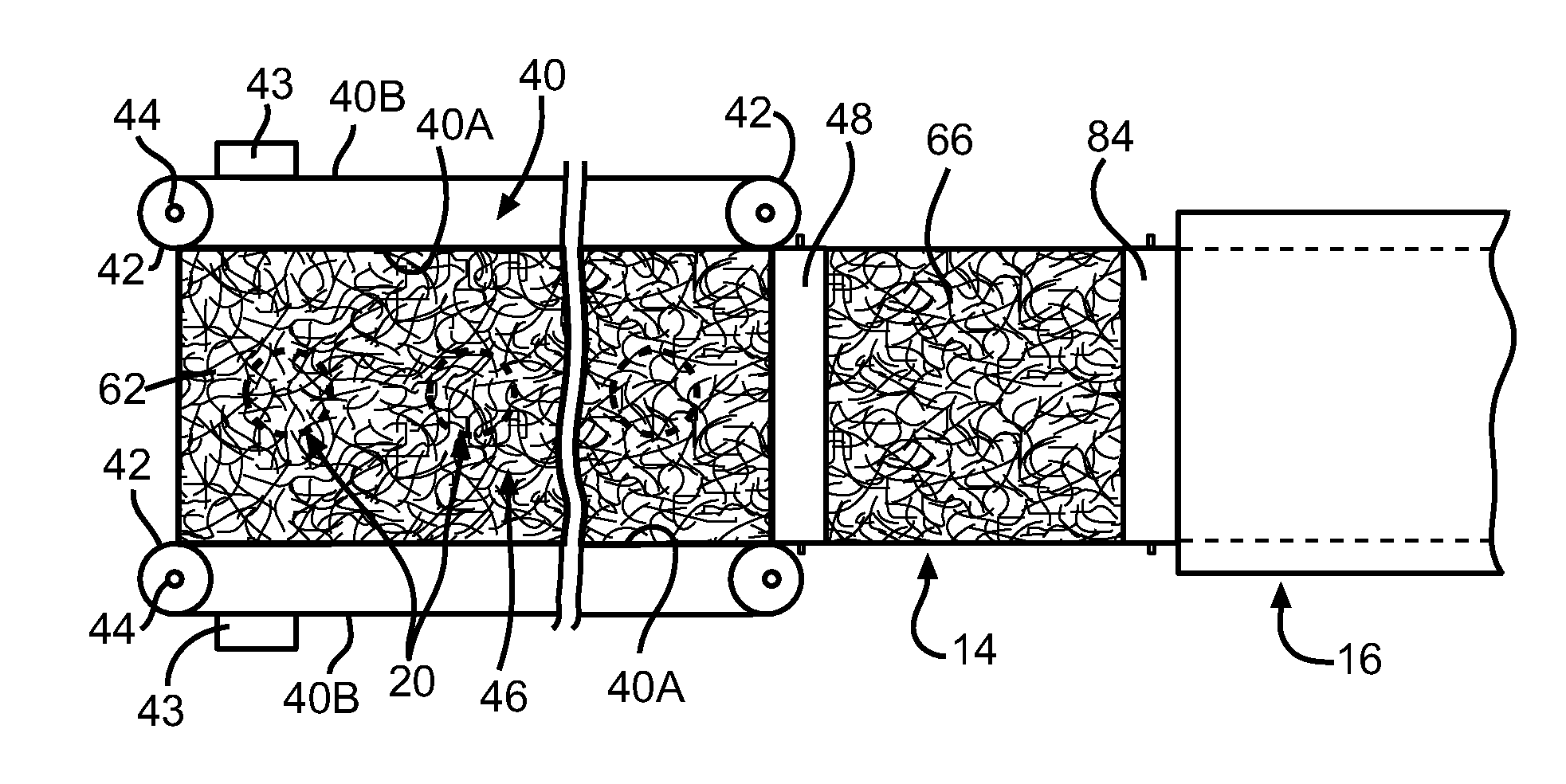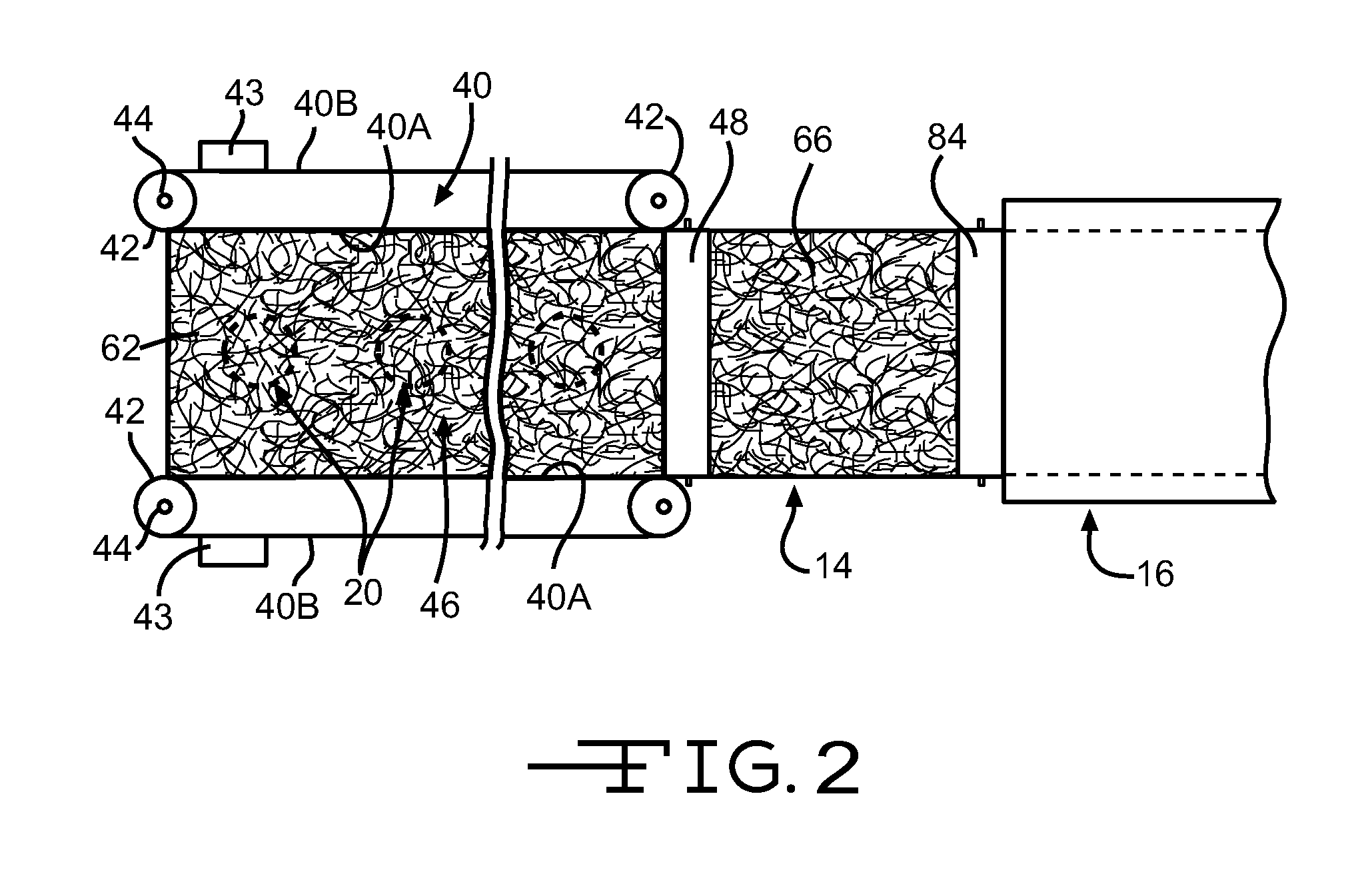Biocides for bio-based binders, fibrous insulation products and wash water systems
- Summary
- Abstract
- Description
- Claims
- Application Information
AI Technical Summary
Benefits of technology
Problems solved by technology
Method used
Image
Examples
example 1
Binder Biocide Trial
[0079]A trial is conducted to test certain biocides in a bio-based binder composition. The bio-based binder compositions and the respective biocides are set forth in Table 1, below. The biocide is mixed with bio-based binder dispersions to a target concentration of about 0.5% on binder solids, approximately at the midpoint of the ranges given in Table 2. A bio-based binder dispersion is prepared having approximately 9% binder solids, and this is applied to glass fibers during the manufacture of insulation blankets at a rate to deliver about 6% LOI binder levels in the finished product. LOI, or loss on ignition, is a well known weight-by-difference analysis for the content of organic binder that can be burned off of glass fibers.
TABLE 1Biocides and / or Preservatives in bio-based bindersASTMASTMSampleBinder . . .with additive of:BiocidePreservativeC1338G21L-170Phenolic ControlxxL-175-C80:20 MD-AcumerxxL-175-B80:20 MD-Acumerw / FungitrolxxxL-176-C80:20 MDCA w / 5% SHPxx...
example 2
Binder Biocide Results
[0081]For ASTM Method G21, five fungal cultures are used Aspergillus niger (American Type Culture Collection # 9642), Penicillium pinophilum (ATCC 11797), Chaetomium globosum (ATCC 6205), Gliocladium virens (ATCC 9645) and Aureobasidium pullulans (ATCC 15233). Spore suspensions of each of the five fungi were prepared and tested for viability.
[0082]Nutrient salts agar is poured into sterile dishes to provide a solidified agar layer from 3-6 mm in depth. Test specimens are cut from insulation products. All tests are run in triplicate. After the agar is solidified, the specimens are placed on the surface of the agar. The surfaces of the test specimens are sprayed with the composite spore suspension. The inoculated test specimens were incubated at 28-30° C. at a relative humidity of not less than 85%. The specimens were examined using a 40× microscope. The results and rating description are given in Table 3, below.
[0083]For ASTM Method C1338, five fungal cultures a...
example 3
Washwater Biocide Trial
[0088]An isothiazoline based biocide (PMC T-360) is added to the washwater of a manufacturing plant for the manufacture of fiberglass insulation products. Illustrative biocides and target concentration levels for use in washwater are also presented in Table 2 above.
[0089]Bacterial counts of this washwater have been estimated by various methodologies. Initially, counts were based on the growing of cultures and the cultures are plated to determining the concentration of colony forming units, or CFU / ml. Without biocide, the counts quickly get quite high, at times exceeding 106 CFU / ml, which causes considerable odor. By the addition of biocide as described above, counts could be maintained within an acceptable level of between 102 and 103 CFU / ml.
[0090]Alternative methodologies include using a bioilluminescence / ATP method, but colorants used in the binder may complicate interpretation. This method can give bacterial results in minutes as compared to cultures that r...
PUM
| Property | Measurement | Unit |
|---|---|---|
| Fraction | aaaaa | aaaaa |
| Fraction | aaaaa | aaaaa |
| Time | aaaaa | aaaaa |
Abstract
Description
Claims
Application Information
 Login to View More
Login to View More - R&D
- Intellectual Property
- Life Sciences
- Materials
- Tech Scout
- Unparalleled Data Quality
- Higher Quality Content
- 60% Fewer Hallucinations
Browse by: Latest US Patents, China's latest patents, Technical Efficacy Thesaurus, Application Domain, Technology Topic, Popular Technical Reports.
© 2025 PatSnap. All rights reserved.Legal|Privacy policy|Modern Slavery Act Transparency Statement|Sitemap|About US| Contact US: help@patsnap.com



